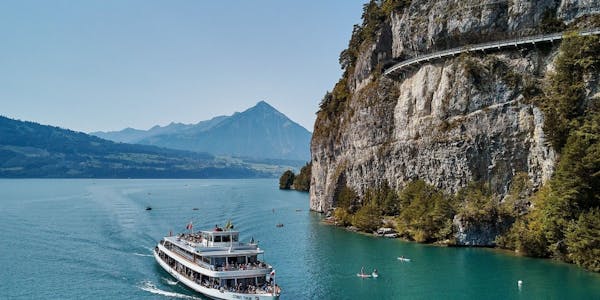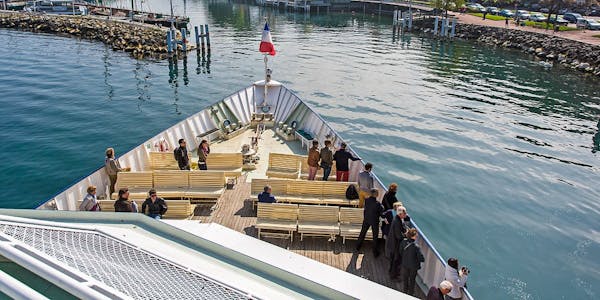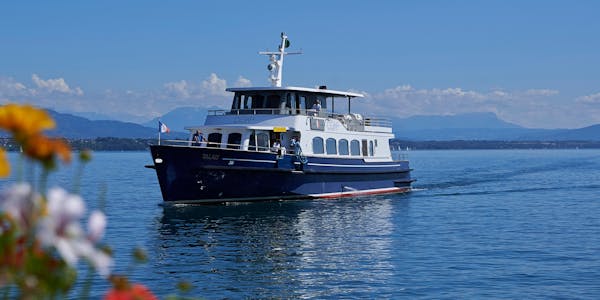
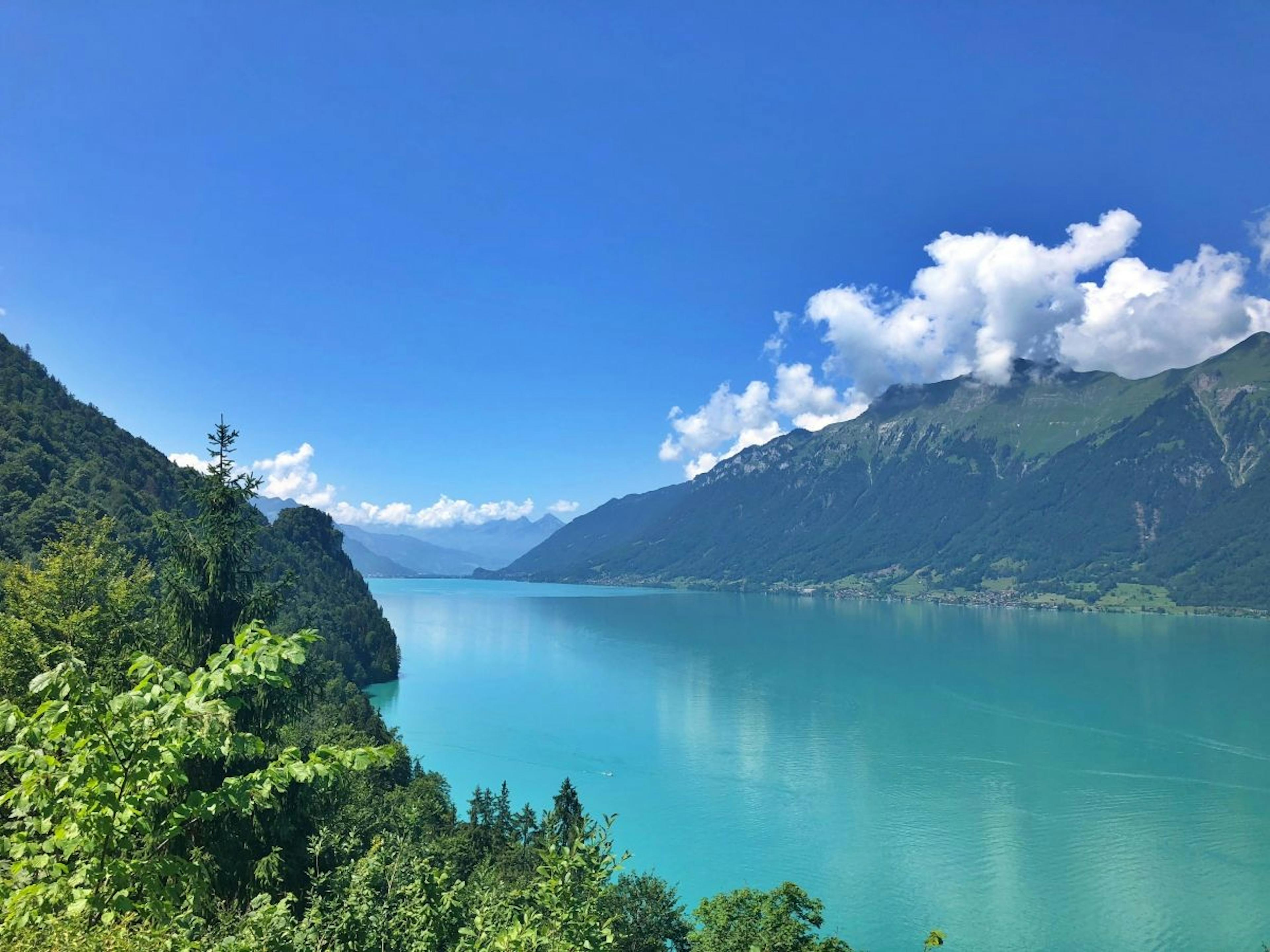
The 13 largest lakes in Switzerland and what makes them special
There are over 1500 lakes in Switzerland, which makes the country an absolute paradise for water lovers. It is not for nothing that it bears the nickname "Water Castle of Europe". We have summarized the 13 largest Swiss lakes in this article.
Activities
Switzerland is nicknamed the "Water Castle of Europe" for a reason. Even a quick glance at the satellite image gives you an idea of how much water there's lying, flowing, circulating, melting, freezing and splashing around in this country.
In total, there are over 1500 Swiss lakes. This means that, statistically speaking, you're never more than 16 km away from the nearest lake. No matter where you are in the country.
Switzerland is home to about 6% of Europe's freshwater reserves. This may seem like a modest number at first glance. But when you consider that Switzerland makes up just 0.4% of Europe's land mass, that 6% suddenly takes on a whole new perspective.
Of course, Switzerland also struggles with water shortages, especially during hot and dry summer periods. And due to the glaciers melting, important water reservoirs are subject to a continuous shrinking process. But generally speaking, Switzerland is in a very comfortable position in terms of water supply.
Of course, we can't list all 1500 Swiss lakes here. Therefore, we get into the 13 largest Swiss lakes to give you an overview.
Lake Geneva
Lake Geneva is the largest Swiss lake. However, this is only half true, as it lies 60% on the Swiss and 40% on the French side. The total area of the lake is 580 km², which makes it the largest and most water-rich inland lake in Europe.
The climate in the Lake Geneva region is very mild and creates ideal conditions for viticulture. North of the lake, one vineyard follows another, with the terraces in Lavaux being a UNESCO World Heritage Site.
Numerous small towns and villages along the shore can be reached by boat. Starting with the Jet d'Eau in Geneva, a 140-meter-high fountain in the lake, and ending at Chillon Castle, a medieval castle near Montreux. By the way, the same places are also connected with bicycle and hiking trails, which makes Lake Geneva a perfect destination for outdoor lovers.
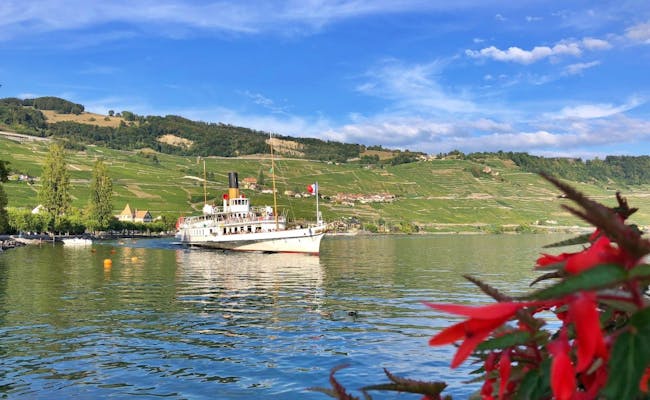 Dampfschiff auf dem Genfersee (Foto: Seraina Zellweger)
Dampfschiff auf dem Genfersee (Foto: Seraina Zellweger) Weinterrassen am Genfersee (Foto: Seraina Zellweger)
Weinterrassen am Genfersee (Foto: Seraina Zellweger)Lake Constance
Lake Constance has an area of 473 km² and also bears the name "Swabian Sea". In terms of mass, it's the second largest lake in Switzerland, although this is not entirely true either. Like Lake Geneva, it juts out over the Swiss border. We share Lake Constance with our neighbors Austria and Germany, with about a third of the lake "belonging" to us.
With a variety of biking and hiking trails, lakeside promenades and beach resorts, Lake Constance is easily accessible. It's therefore a popular destination for people taking it easy as well as sports enthusiasts.
In addition, various boat companies operate on Lake Constance - on the one hand within Switzerland, but also to Germany and Austria. The fastest and most direct connection across the lake is by ferry between Romanshorn and Friedrichshafen.
There are a total of 16 islands on Lake Constance. The German town of Lindau, the flower island of Mainau, and the island of Reichenau are among the most famous islands.
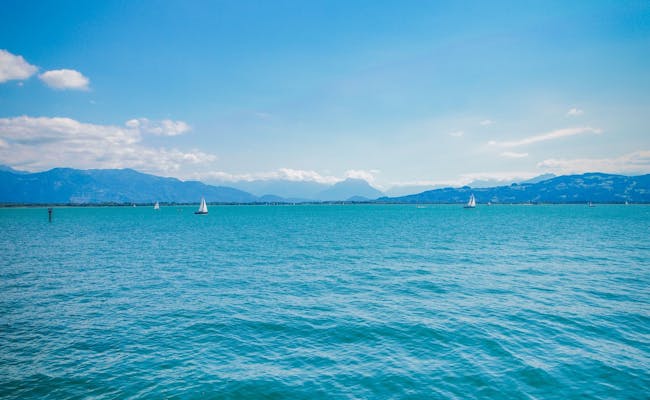 Der Bodensee, auch bekannt als "Schwäbisches Meer" (Foto: Unsplash)
Der Bodensee, auch bekannt als "Schwäbisches Meer" (Foto: Unsplash)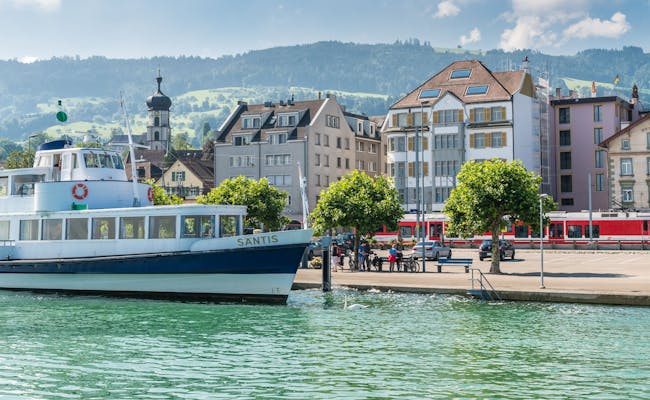 Schiff auf dem Bodensee (Foto: St. Gallen Bodensee Tourismus)
Schiff auf dem Bodensee (Foto: St. Gallen Bodensee Tourismus)Lake Neuchâtel
Let's finally get to the largest lake that counts completely as a Swiss lake. Lake Neuchâtel has an area of 218 km² and, like Lake Geneva, is located in French-speaking Switzerland. Together with its neighbors, Lake Biel and Lake Murten, Lake Neuchâtel forms the Three-Lakes Region.
The lake is another paradise for day trips. The cities of Neuchâtel, Yverdon-les-Bains and Estavayer-le-Lac - but also various villages in between - are easily accessible by bike, on foot, by boat or by public transport.
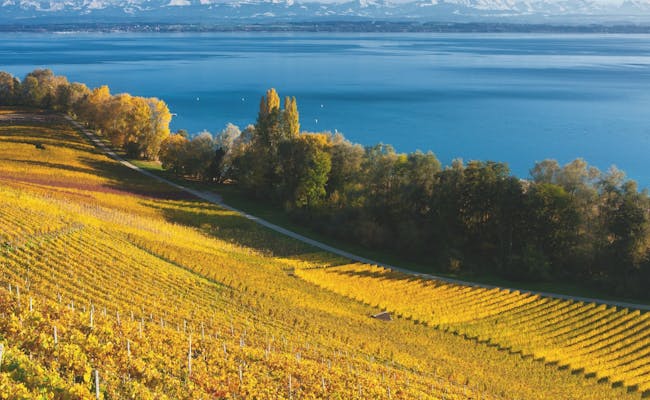 Neuenburgersee (Schweiz Tourismus Andreas Gerth)
Neuenburgersee (Schweiz Tourismus Andreas Gerth) Neuenburgersee (Schweiz Tourismus Rob Lewis)
Neuenburgersee (Schweiz Tourismus Rob Lewis)Lake Lucerne
Hardly any lake in Switzerland has such a peculiar shape as Lake Lucerne. Its area is 133 km², which is just 23% of Lake Geneva. However, its perimeter is 75% of Lake Geneva, which definitely speaks for a winding lake.
 Der verwinkelte Vierwaldstättersee (Karte: GoogleMaps)
Der verwinkelte Vierwaldstättersee (Karte: GoogleMaps)In terms of tourism, Lake Lucerne is one of the very big players. On the one hand, the city of Lucerne, which is extremely popular with visitors, is located directly on the lake. On the other hand, you will find the three mountain peaks Pilatus, Rigi and Stanserhorn in the immediate vicinity of Lake Lucerne.
Particularly beautiful are the numerous paddle steamers and passenger ships that chug across the lake year-round. Lake Lucerne is also an ideal area to combine hiking, funicular rides, cultural sightseeing and boat trips in a single region.
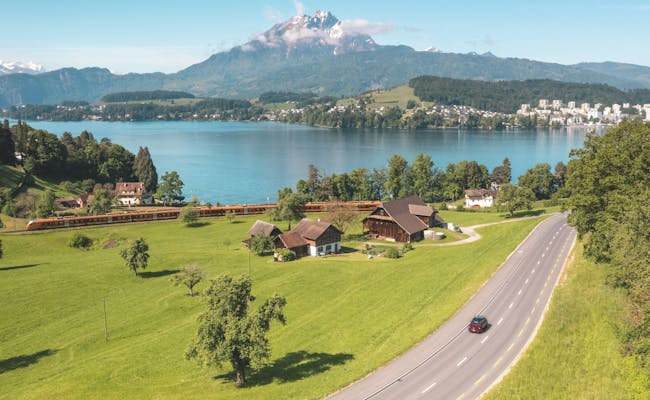 Vierwaldstättersee mit dem Pilatus (Foto: Schweiz Tourismus Andre Meier)
Vierwaldstättersee mit dem Pilatus (Foto: Schweiz Tourismus Andre Meier)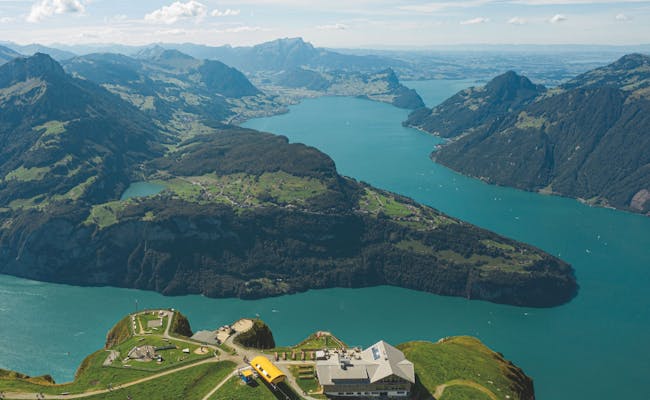 Aussicht auf den Vierwaldstättersee (Foto: Schweiz Tourismus Daniel Conrad Loosli)
Aussicht auf den Vierwaldstättersee (Foto: Schweiz Tourismus Daniel Conrad Loosli)Lake Zurich
If you take a trip to Zurich, your path will almost certainly lead you to the very densely built-up shore of Lake Zurich sooner or later.
With 88 km², the fifth largest lake in Switzerland has a long, narrow shape and somewhat reminds you of a banana. Lake Zurich is divided into the Obersee and the Untersee. These two sections are separated by the dam between Rapperswil and Pfäffikon with two passages for passenger ships.
There are four islands on Lake Zurich. Passenger ships operate year-round between Schmerikon and Zurich. In total, there are more than 30 moorings, including the island of Ufnau.
Since the agglomeration of Zurich is the largest conurbation in Switzerland, you might not find the peace and quiet on Lake Zurich that you desire. Nevertheless, the shore, where publicly accessible, invites you to linger. And a leisurely picnic at Bellevue in Zurich is definitely something you shouldn't miss.
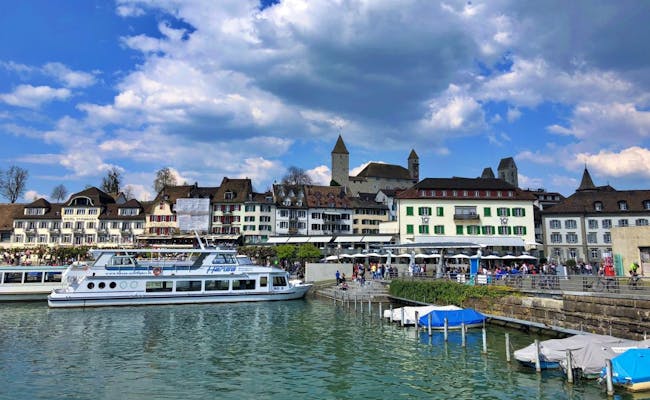 Rapperswil am Zürichsee (Foto: Seraina Zellweger)
Rapperswil am Zürichsee (Foto: Seraina Zellweger) Zürichsee (Foto: MySwitzerland)
Zürichsee (Foto: MySwitzerland)Lake Thun
Lake Thun is one of those lakes that know how to present its photogenic spots. Its charm is largely due to its advantageous location surrounded by mountains. The almost 50 km² large lake is sandwiched on both sides between majestic mountains, green alpine meadows and idyllic villages. Thun lies on one side, Interlaken on the other.
By the way, Lake Thun is one of the two reasons why Interlaken is called "Interlaken", meaning "between the lakes". You'll get to know the second reason later.
The boat trip between Thun and Interlaken is particularly scenic and impressive. It takes about two hours and is definitely worth the trip. Various villages along the way invite you to stop for a while. Even if you do the whole trip in one piece, you will certainly not get bored with amazement and taking pictures.
The southern shore of Lake Thun is more easily accessible than the northern one. The hiking and biking trails run closer to the lake on the southern shore, while the northern shore is obstructed by the busy lake road. A circumnavigation by bike is nevertheless possible and takes about 3-4 hours.
Apart from the usual water sports like water skiing or wakeboarding, sailing on Lake Thun is very popular. On a nice summer day you can see the sailing students sailing around in their boats. Almost as beautiful in a row as a family of ducks...
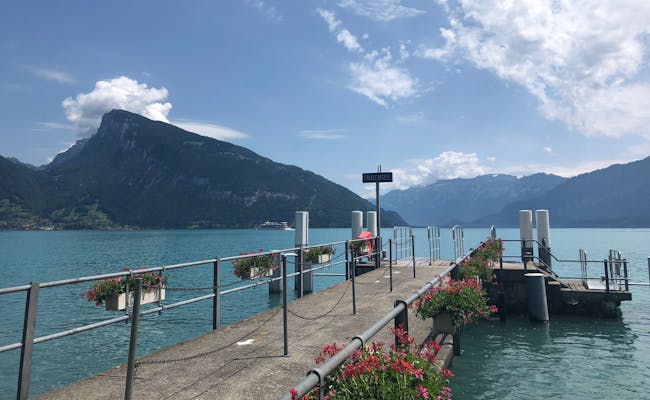 Thunersee (Foto: Seraina Zellweger)
Thunersee (Foto: Seraina Zellweger) Thunersee (Foto: Seraina Zellweger)
Thunersee (Foto: Seraina Zellweger)Lake Maggiore
Next we make a detour to the Italian part of Switzerland, to Ticino. Only one fifth of Lake Maggiore is on Swiss soil and the total area is 212 km². So the part in Switzerland is about 42 km².
Although it lies mainly on Italian soil, the lake is a strong magnet for the inhabitants of Ticino. But also for visitors from all over Switzerland.
In particular, the towns of Locarno and Ascona offer a high quality of stay and attract people in droves. Since Ticino has a much milder climate than the rest of Switzerland, Lake Maggiore is a pleasant swimming destination even in early summer.
The Brissago Islands - two heavily wooded natural paradises in Lake Maggiore - can be reached by boat from Porto Ronco. Or with some stamina and strong legs even by pedalo.
According to an agreement, Italy is responsible for passenger navigation on Lake Maggiore. On the whole lake there are ships of the company Navigazione del Lago Maggiore.
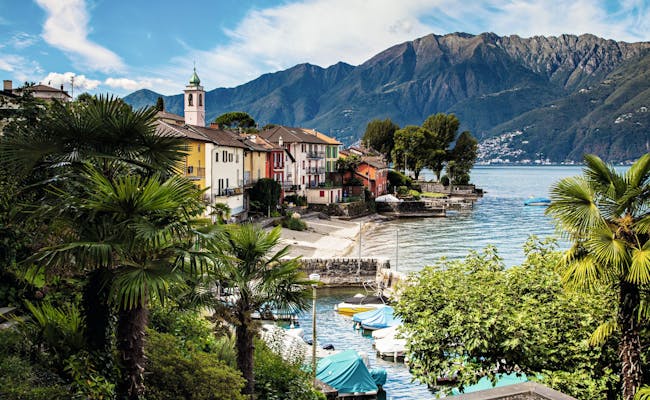 Ascona am Lago Maggiore (Foto: Schweiz Tourismus Jan Geerk)
Ascona am Lago Maggiore (Foto: Schweiz Tourismus Jan Geerk) Lago Maggiore (Foto: Schweiz Tourismus Christof Sonderegger)
Lago Maggiore (Foto: Schweiz Tourismus Christof Sonderegger)Lake Biel
With a size of 40 km², Lake Biel in the Three-Lakes Region is the eighth largest lake in Switzerland. Particularly idyllic are the vineyards on its northern shore and St. Peter's Island. Strictly speaking, this island is not an island (anymore), but a peninsula that juts out about 5 km into Lake Biel
The car-free nature reserve on St. Peter's Island is perfect for an excursion by boat, by bike or on foot. On a forest nature trail you will learn everything about the local flora and fauna on various information boards. You will also have the opportunity to visit the Rousseau monument at the Südländte or even the room of the famous Jean-Jacques Rousseau
Passenger ships of the Lake Biel Navigation Company operate on Lake Biel. But also on your own with a SUP, a kayak or a rowing boat, the lake can be perfectly explored. Especially beautiful is a circumnavigation of the lake by bike. The route is 43 km long and takes just under 4 hours.
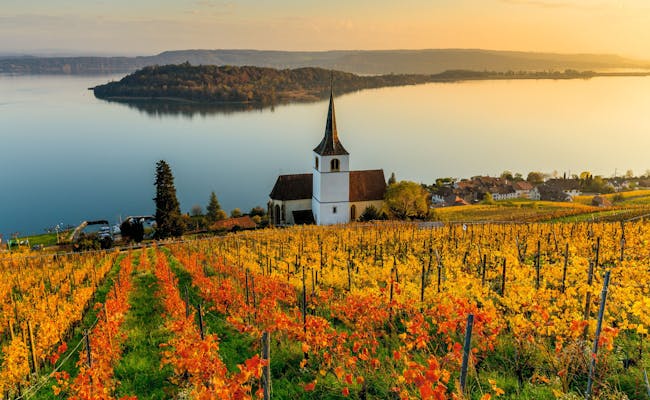 Weinberge am Bielersee (Foto: Schweiz Tourismus Jan Geerk)
Weinberge am Bielersee (Foto: Schweiz Tourismus Jan Geerk)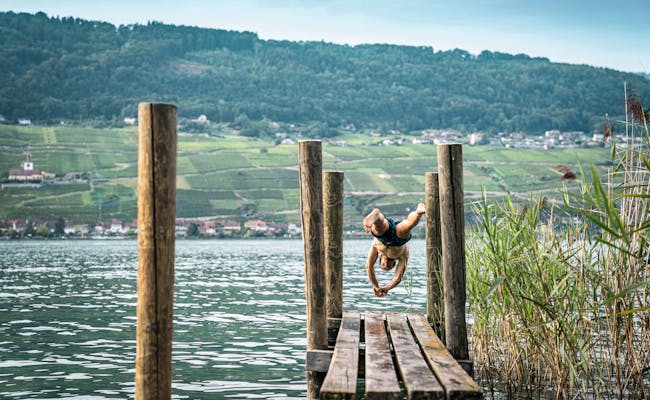 Steg am Bielersee (Foto: Schweiz Tourismus)
Steg am Bielersee (Foto: Schweiz Tourismus)Lake Zug
Lake Zug has an area of 34.8 km² and is located in front of the eponymous city of Zug. Lake Zug is known for its idyllic sunsets. So if you are lucky enough to be at the lake on an evening, find a quiet jetty and enjoy the last sun rays of the day.
The region around Zug is also famous for its many cherry and chestnut trees. A "cherry hike" in spring, when the trees are in bloom, is almost a must. A particularly beautiful trail leads from Zug to Oberwil and back.
If you're a hopeless cherry blossom fan, you can hike all along the lake from Zug to Goldau. This path is also outside the blossom season a beautiful, approx. 5-hour excursion with a view of the lake.
On and in the Zugersee you can of course also let off steam. On the one hand, the Lake Zug boat service operates in summer. It takes you in about an hour from Zug to the other end of the lake to Goldau. On the other hand, you have the opportunity to swim and spend a comfortable bathing day in 13 lidos and bathing areas.
 Zugersee (Foto: Schweiz Tourismus Andre Meier)
Zugersee (Foto: Schweiz Tourismus Andre Meier)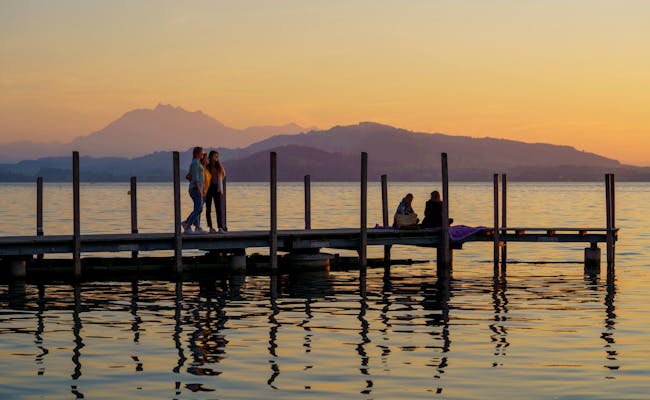 Abendstimmung am Zugersee (Foto: Schweiz Tourismus Andre Meier)
Abendstimmung am Zugersee (Foto: Schweiz Tourismus Andre Meier)Lake Lugano
Like Lake Maggiore, Lake Lugano is located in Switzerland and Italy. The total area of the lake is 48.7 km², of which 30 km² belong to Switzerland. Thanks to the very mild climate, which is influenced by the Mediterranean Sea at Lago di Lugano, even palm trees and citrus fruits grow here
While other lakes in Switzerland are still too cold for swimming in spring, the bathing season starts earlier here. Beach resorts and bathing meadows abound on the shores of Lago di Lugano. So you can spend almost the whole year in, on or at the lake.
Popular excursion destinations in the region with a magnificent view of the lake are Monte Generoso, Monte San Salvatore and Monte Brè.
If you travel by boat, you will discover the diversity around Lago di Lugano. Probably the most famous destination for families is the Swissminiatur in Melide, right next to Lugano. In this miniature world you will find Switzerland depicted and in just a few minutes you can marvel at the Matterhorn and Lake Constance.
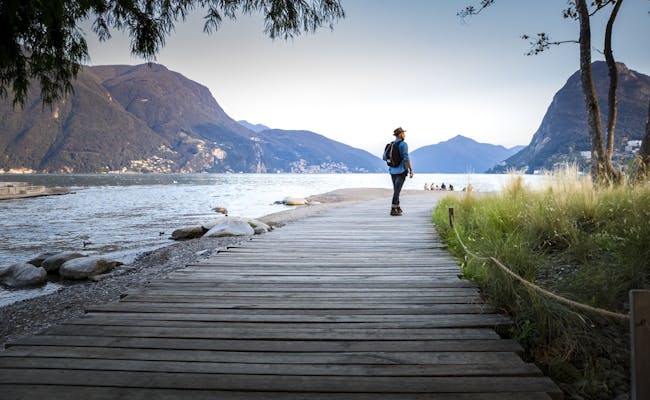 Foce del Cassarate (Foto: Ticino Turismo Loreta Daulte)
Foce del Cassarate (Foto: Ticino Turismo Loreta Daulte) Lago di Lugano (Foto: Ticino Turismo Enrico Boggia)
Lago di Lugano (Foto: Ticino Turismo Enrico Boggia)Lake Brienz
Lake Brienz is the cold, turquoise cousin of Lake Thun and the second reason for Interlaken's name. It is fed by the fresh water of the Aare River and the surrounding mountains even before Lake Thun and is therefore noticeably colder.
So should you choose to swim in one of the cleanest lakes in Switzerland, the potential for goosebumps in this 30 km² body of water is considerable. Even in summer.
You can also linger on Lake Brienz during a boat ride, which takes about 1:25 hours between Interlaken and Brienz. A highlight on the way is a stop at the pier of the Grandhotel Giessbach. If time allows, we recommend a short detour to the Hotel Giessbach with its waterfalls.
There is no lack of water activities on Lake Brienz either. From kayak tours to jet boating and rowing boats, there is a wide range of activities available to you.
 Brienzersee beim Grandhotel Giessbach (Foto: Seraina Zellweger)
Brienzersee beim Grandhotel Giessbach (Foto: Seraina Zellweger)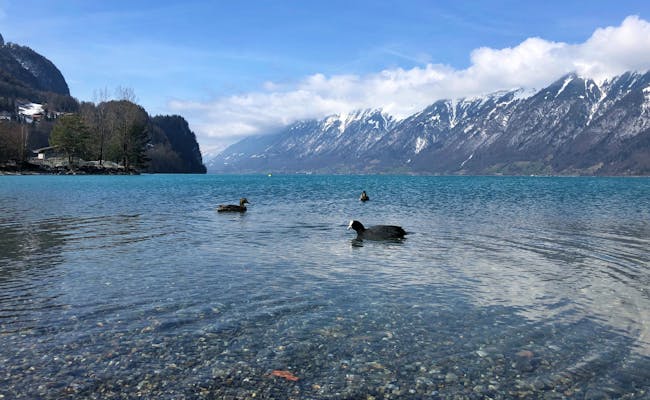 Brienzersee im Winter (Foto: Seraina Zellweger)
Brienzersee im Winter (Foto: Seraina Zellweger)Lake Walen
Lake Walen is a real jewel in eastern Switzerland, surrounded by steep cliffs. With its 24 km² it borders south on the Churfirsten, a mountain range in Toggenburg. Its fjord-like features make the lake resemble a Scottish loch, especially in thundery and gloomy moods.
In the east of the lake lies the pretty "Chive Island". The island gets its special name from the strong smell that prevails on it. Even though Chive Island is very small and can even be flooded depending on the water level, it is still worth a visit. However, you will need your own boat or a kayak to reach it outside the waterfowl breeding season.
By far the best view of Lake Walen is when you go up high. A hike on the Churfirsten or on the Flumserberg are perfect to take beautiful photos of the turquoise blue lake depending on the sunlight.
Passenger ships operate on Lake Walen all year round. In winter, however, the schedule is very thinned out. By the way, on the northern shore of the lake there are three communities to which no road leads and which can be reached exclusively by boat. If you are on site and look at the topography of Lake Walen, you will also see why this is so.
 Schnittlauchinsel auf dem Walensee (Schweiz Tourismus Roland Gerth)
Schnittlauchinsel auf dem Walensee (Schweiz Tourismus Roland Gerth) Walensee (Foto: Schweiz Tourismus Ivo Scholz)
Walensee (Foto: Schweiz Tourismus Ivo Scholz)Lake Murten
Together with Lake Neuchâtel and Lake Biel, Lake Murten is the third candidate to lend its name to the Three-Lakes Region. With its 22 km² it is number 13 on the ranking list of the largest Swiss lakes. It can be perfectly circumnavigated by bicycle. The tour is 28 km long and takes about 2:30 hours.
A highlight on Lake Murten is the Zähringer town of the same name Murten with its mighty ring wall. But also the longest freshwater beach in Europe can be found at this beautiful lake. In Salavaux you will find the 500 m long, shallowly sloping sandy beach. It is perfect for a family trip, as children can stand for a long time until the water gets deep. And thanks to its shallow depth, the lake quickly warms up to pleasant swimming temperatures, making it the perfect bathing lake.
In summer you can take a daily round trip by boat from Murten. The boat goes once around the lake in about 1:15 hours and presents you with the most beautiful views you can find in the region.
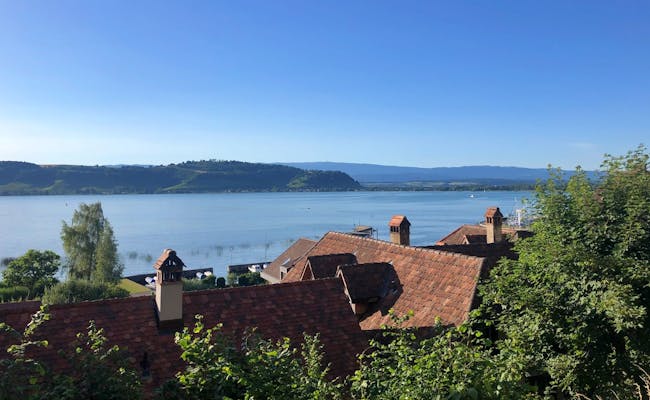 Das Städtchen Murten am Murtensee (Foto: Seraina Zellweger)
Das Städtchen Murten am Murtensee (Foto: Seraina Zellweger) Strand in Salavaux (Foto: Seraina Zellweger)
Strand in Salavaux (Foto: Seraina Zellweger)The list of Swiss lakes could be continued here almost ad infinitum. As I said, there are over 1500 lakes in Switzerland. Now you know some of the most important ones and what to expect. If you are looking for more information about the other 1487 lakes, we recommend the Website of Lake Switzerland. Otherwise we wish you a lot of fun in the water castle of Europe.

